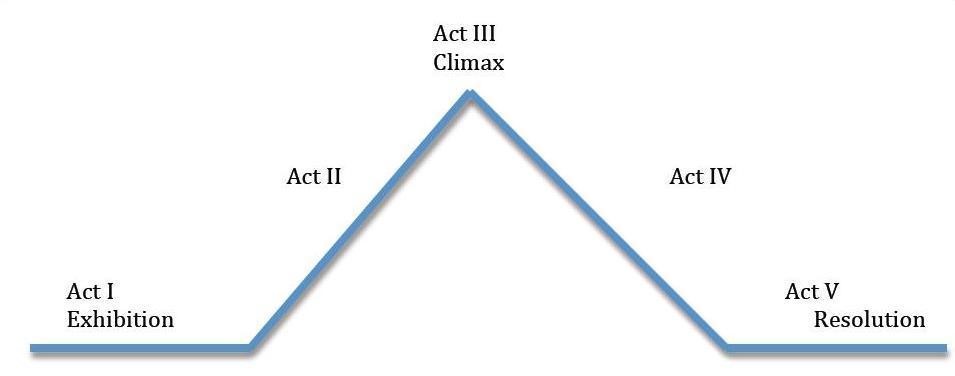Theatrical Terms and
Definitions
Tragedy:
A play that consists of tragic events and ends in an unhappy manner, especially one concerning the downfall of the main character.
Act:
A major division in a play. An act can be sub-divided into scenes. King Lear follows a Traditional 5 Act Structure


Climax: The turning point of the action in the plot of a play and the point of greatest tension in the work.
Example: Thunderstorm in Act 3, Gloucester’s blinding , Act V, Scene 3 when Cordelia and Lear are captured by Edmund.
Conflict: There is no drama without conflict. The conflict between opposing forces in a play can be external (between characters) or internal (within a character) and is usually resolved by the end of the play.
Example: King Lear banishing Cordelia at the beginning of the play.
Foil: A secondary character whose situation often parallels that of the main character while his behaviour or response or character contrasts with that of the main character, throwing light on that particular character’s specific temperament.
Example: Gloucester to King Lear
Scene: A traditional segment in a play. Scenes are used to indicate (1) a change in time (2) a change in location, (3) provides a jump from one subplot to another, (4) introduces new characters (5) rearrange the actors on the stage. Traditionally plays are composed of acts, broken down into scenes.
Soliloquy: A speech meant to be heard by the audience but not by other characters on the stage (as opposed to a monologue which addresses someone who does not respond). In a soliloquy only the audience can hear the private thoughts of the characters.
Example: Edmund in Act I, Scene 2.
Monologue: A speech presented by a single character in a play to express their thoughts aloud usually to address another character or the audience.
Staging: The spectacle a play presents in performance, including the position of actors on stage, the scenic background, the props and costumes, and the lighting and sound effects.




